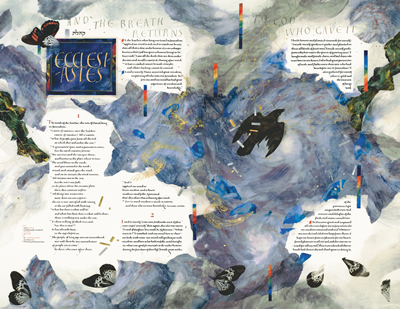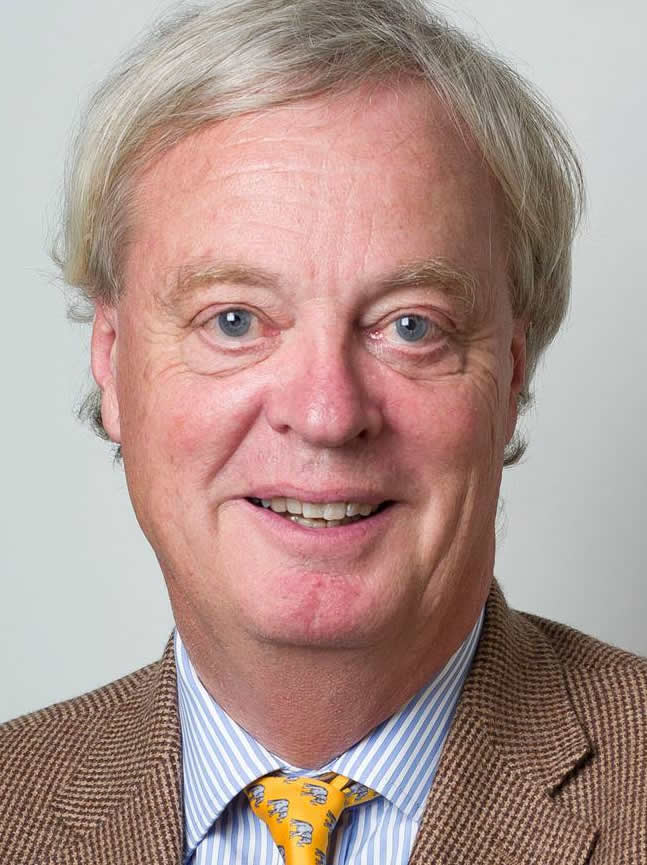“Visualizing and Translating Scriptures: Reflections on The Saint John’s Bible”

Thursday, February 26, 2015
Chazen Museum of Art
750 University Ave.
University of Wisconsin–Madison
“Visualizing and Translating Scriptures: Reflections on The Saint John’s Bible” will set The Saint John’s Bible within the broader context of illuminated Biblical manuscripts, consider the different approaches that the three Abrahamic faiths have developed to visualize and translate sacred scriptures, and locate The Saint John’s Bible itself within the larger trajectories of the combined religious traditions.
The symposium is held in conjunction with a major exhibition at the Chazen Museum of Art, “Illuminating the Word: The Saint John’s Bible,” which will be open from December 19, 2014 to March 15, 2015 in the Pleasant T. Rowland Galleries. Thirty-four loose folded pages (bifolia) will be displayed. This will be one of the last opportunities to view these pages before they are bound into their final book form, and the first time that examples from all seven volumes will be displayed together in public. Please visit the Chazen Museum of Art’s web site to learn more about this exhibition and related special events.

Ecclesiastes, Donald Jackson, Copyright 2006, The Saint John’s Bible, Order of Saint Benedict, Collegeville, Minnesota, USA.
The symposium
Most work on The Saint John’s Bible heretofore has considered it primarily in terms of its production; there is little scholarship on the Bible as an art historical object itself. This symposium is intended to lay the groundwork for future research on the Bible in its own religious and art historical context, and the organizers plan to publish the symposium essays.
The first three papers will be grouped together in a single session followed by a roundtable discussion of all the speakers. Dr. de Hamel will lead a gallery walk through the exhibition for panel attendees, and present the public plenary lecture. Dr. de Hamel will also conduct a workshop on manuscripts for advanced undergraduates and graduate students at UW–Madison.
SCHEDULE OF PUBLIC EVENTS
Thursday, February 26, 2015
1:00 pm–3:15 pm | Presentations and panel discussion, moderated by Prof. Thomas E.A. Dale, Department of Art History, UW–Madison. Free and open to the public.
Chazen Museum of Art Auditorium
750 University Ave., Madison, Wisconsin
 Prof. Marc Epstein, Professor of Religious Studies at Vassar College, will explore Jewish translations and visualizations of scriptural texts in manuscripts made for Jewish patrons.
Prof. Marc Epstein, Professor of Religious Studies at Vassar College, will explore Jewish translations and visualizations of scriptural texts in manuscripts made for Jewish patrons.
 Prof. Conrad Rudolph, Professor of Medieval Art History at the University of California–Riverside, will consider Christian exegesis of the Bible in medieval European Biblical manuscripts.
Prof. Conrad Rudolph, Professor of Medieval Art History at the University of California–Riverside, will consider Christian exegesis of the Bible in medieval European Biblical manuscripts.
 Prof. David Roxburgh, Professor of Islamic Art History at Harvard University, will discuss Islamic aniconism and the translation of scriptural texts into sacred calligraphy and ornament in Islamic manuscripts of the Qu’ran.
Prof. David Roxburgh, Professor of Islamic Art History at Harvard University, will discuss Islamic aniconism and the translation of scriptural texts into sacred calligraphy and ornament in Islamic manuscripts of the Qu’ran.
3:15 pm–5:00 pm | Reception and guided exhibition walk following the panel discussion. Registration for the reception and exhibition walk is now closed. Please contact Karen Turino if you have already registered and have questions: turino@wisc.edu and 608-263-1821.
7:30 pm–9:00 pm | Plenary lecture by Dr. Christopher de Hamel. Free and open to the public.
Conrad A. Elvehjem Building, L160 lecture hall (lower level)
800 University Ave., Madison, Wisconsin
"The Saint John's Bible and Making Bibles in the Middle Ages"
Many of the important monasteries of medieval Europe commissioned vast manuscript Bibles or received them as gifts from princely patrons. The manuscripts, in Latin, were symbols of prestige and of the commitment to the Scriptures at the core of monastic life, and they were among the greatest treasures of major religious houses. Some of the finest of these enormous Bibles were made in twelfth-century England, such as those illuminated for Bury St Edmunds Abbey and Winchester Cathedral Priory.
The modern illuminated manuscript Bible commissioned by the Benedictine Abbey of Saint John in Minnesota in the mid-1990s is the first such Bible made entirely by hand since the Middle Ages, using traditional methods.
The extensively illustrated lecture will examine The Saint John’s Bible for what it can teach us today about the making of medieval Bibles 850 years ago. It will compare the modern experience with what is known or can be deduced about the practices in the twelfth century. It will consider questions of cost (huge, both then and now), choice of scribe, the preference of text, extent, and subjects of illumination, and the problems and decisions from the perspective of the patron. It will also look at the enterprise from the point of view of the scribes and illuminators, how they struggled and dealt with questions of the supply of materials, page design, collaboration among craftsmen, and the tedium and the joy of a commission which might occupy many years. It will show how the practical experience of commissioning and making The Saint John’s Bible provides an entirely new insight into some of the most mysterious and beautiful art of the high Middle Ages.
 Dr. Christopher de Hamel, Donnelly Fellow Librarian of Corpus Christi College (Parker Library), Cambridge University. Dr. de Hamel is one of the world's foremost scholars of illuminated manuscripts, having written several authoritative books on the subject and managed sales of illuminated manuscripts for 25 years at Sotheby's auction house.
Dr. Christopher de Hamel, Donnelly Fellow Librarian of Corpus Christi College (Parker Library), Cambridge University. Dr. de Hamel is one of the world's foremost scholars of illuminated manuscripts, having written several authoritative books on the subject and managed sales of illuminated manuscripts for 25 years at Sotheby's auction house.
This University of Wisconsin–Madison symposium is organized by the
Lubar Institute for the Study of the Abrahamic Religions,
with generous support from the
Watrous Fund of the Department of Art History
Friends of the UW–Madison Libraries
Religious Studies Program
UW Anonymous Fund
and the
Chazen Museum of Art.
Watch calligrapher Donald Jackson discuss the making of The Saint John’s Bible on “The Today Show” (video may be preceded by an advertisement via NBC).
